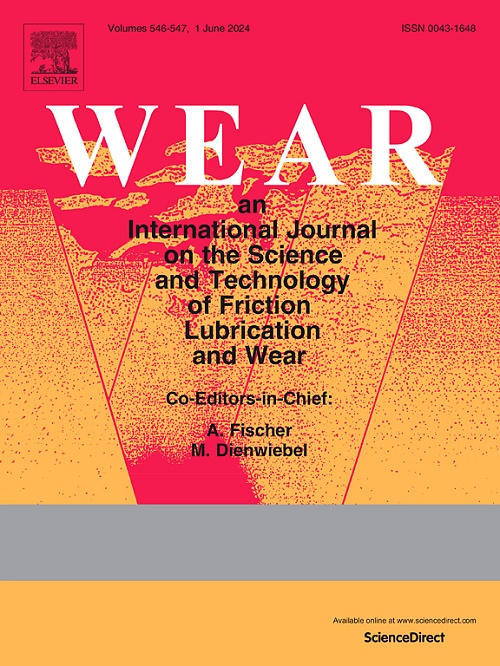Friction reduction mechanism on the grinding interface during nanofluid minimum quantity lubrication grinding FRP
IF 5.3
1区 工程技术
Q1 ENGINEERING, MECHANICAL
引用次数: 0
Abstract
Fiber-reinforced resin matrix composites (FRP) are highly abrasive, and there is strong friction between the fibers and the abrasive grain during the grinding process. Nanofluid minimum quantity lubrication (NMQL) is an excellent lubrication technology that can significantly reduce the friction force. To investigate the lubrication performance of different nanoparticles, this study analyzed the friction reduction mechanism of tubular, layered, hexahedral, and spherical nanoparticles on the grinding interface based on tribological theory. Secondly, CNTs, MoS2, SiC, CuO, and Al2O3 were selected to represent tubular, laminar, hexahedral, and spherical nanoparticles for grinding experiments to verify the validity of this mechanism. The results showed that the grinding forces Fn, Ft, and Fr were reduced by 86.7 %, 68.9 %, and 81.2 %, respectively, in the NMQL-Al2O3 condition compared to the dry grinding condition. The micro morphology of the grinding surface showed that the fiber damage was the lowest under the NMQL-Al2O3 condition. Sa, Sz, and Sq were reduced by 62.9 %, 50.5 %, and 57.8 % under NMQL-Al2O3 compared to dry grinding conditions. These results show that high-hardness spherical nanoparticles (Al2O3) are beneficial in reducing the friction, have better lubrication performance, and can significantly reduce fiber wear during the FRP grinding process.
纳米流体最小量润滑磨削玻璃钢过程中磨削界面的减摩机制
纤维增强树脂基复合材料(FRP)具有很强的磨蚀性,在磨削过程中纤维与磨粒之间存在很强的摩擦。纳米流体最小量润滑(NMQL)是一种极好的润滑技术,可以显著降低摩擦阻力。为了研究不同纳米颗粒的润滑性能,基于摩擦学理论分析了管状纳米颗粒、层状纳米颗粒、六面体纳米颗粒和球形纳米颗粒在磨削界面上的减摩机理。其次,选择CNTs、MoS2、SiC、CuO和Al2O3分别代表管状、层状、六面体和球形纳米颗粒进行磨削实验,验证该机理的有效性。结果表明:与干磨相比,NMQL-Al2O3条件下的磨削力Fn、Ft和Fr分别降低了86.7%、68.9%和81.2%;磨削表面的微观形貌表明,在NMQL-Al2O3条件下,纤维损伤最小。与干磨相比,在NMQL-Al2O3条件下,Sa、Sz和Sq分别降低了62.9%、50.5%和57.8%。结果表明,高硬度球形纳米颗粒(Al2O3)有利于减少摩擦,具有较好的润滑性能,可以显著减少FRP磨削过程中纤维的磨损。
本文章由计算机程序翻译,如有差异,请以英文原文为准。
求助全文
约1分钟内获得全文
求助全文
来源期刊

Wear
工程技术-材料科学:综合
CiteScore
8.80
自引率
8.00%
发文量
280
审稿时长
47 days
期刊介绍:
Wear journal is dedicated to the advancement of basic and applied knowledge concerning the nature of wear of materials. Broadly, topics of interest range from development of fundamental understanding of the mechanisms of wear to innovative solutions to practical engineering problems. Authors of experimental studies are expected to comment on the repeatability of the data, and whenever possible, conduct multiple measurements under similar testing conditions. Further, Wear embraces the highest standards of professional ethics, and the detection of matching content, either in written or graphical form, from other publications by the current authors or by others, may result in rejection.
 求助内容:
求助内容: 应助结果提醒方式:
应助结果提醒方式:


